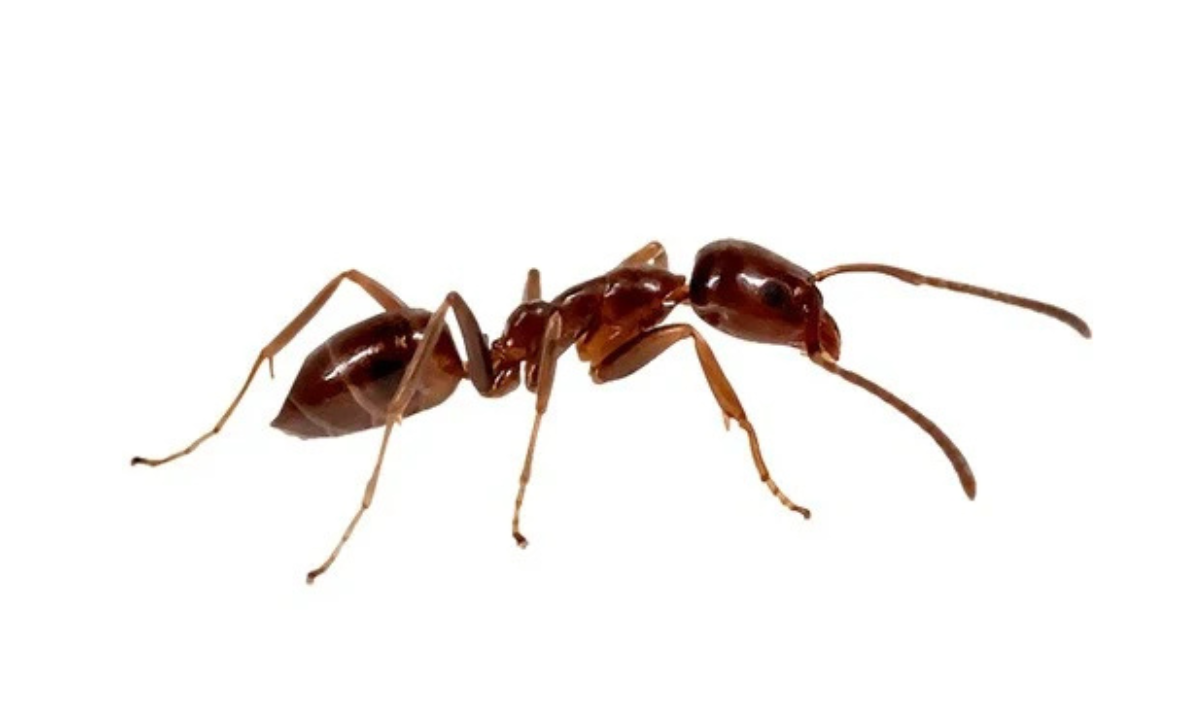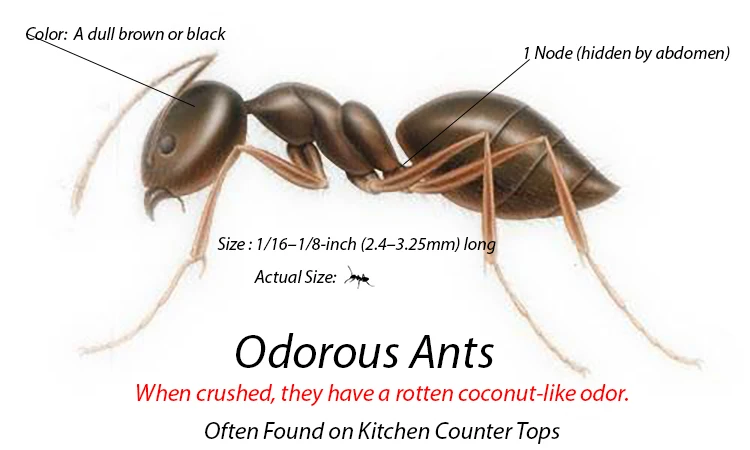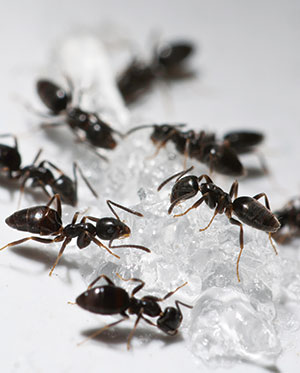Odorous House Ants

Odorous House Ants in Massachusetts – How to Identify, Prevent, and Eliminate These Persistent Pests
If you’ve ever crushed a tiny ant in your kitchen and noticed a strange, rotten coconut-like smell, you’ve likely encountered an Odorous House Ant. These small ants, commonly referred to as OHAs, are one of the most frequent ant species invading Massachusetts homes. Despite their size, they can become a significant nuisance when they establish colonies indoors.
Unlike some ant species that remain outdoors, odorous house ants are highly adaptable. They build nests in soil, mulch, under debris, and, when conditions allow, inside wall voids or under flooring. Once they find a reliable food source, they create scent trails to lead the rest of the colony to it—often resulting in long, persistent lines of ants marching across your countertops.
What Do Odorous House Ants Look Like?
For homeowners trying to identify their ant problem, recognizing an odorous house ant can be tricky since they resemble many other ant species. These ants are small, only about 1/16 to 1/8 inch long, and range from brown to black in color. They have an unevenly shaped thorax and, unlike carpenter ants, they do not bite or damage wood.
Their most distinctive trait is their smell. When crushed, they release a pungent odor similar to rotting coconut, giving them their name. This feature, along with their size and behavior, can help you distinguish them from other household ants.

How to Tell If You Have an OHA Infestation
Because odorous house ants are small and quick, it’s easy to dismiss a few as harmless. However, even a handful often indicates a larger colony nearby. Homeowners should watch for:
Ant trails leading to food or water sources.
Nesting sites near moisture—under sinks, around leaky pipes, or behind appliances.
A persistent coconut-like odor when ants are crushed.
Unlike carpenter ants or termites, these ants do not cause structural damage, but their ability to invade kitchens and pantries makes them a frustrating problem. They also have multiple queens per colony, meaning killing a few workers won’t solve the problem.

Why DIY Ant Control Often Fails
Many homeowners try store-bought ant sprays to kill visible ants. While this may offer temporary relief, it rarely eliminates the colony. Odorous house ants have multiple nesting sites, and if a colony feels threatened, it may “bud”, splitting into several smaller colonies that spread throughout the home. This makes DIY control not only ineffective but can sometimes make the problem worse.
Sprays may kill the ants you see, but the queens remain protected deep inside their nests, continuing to reproduce.
Preventing Odorous House Ants from Returning
After treatment, prevention is key to keeping these pests out. Homeowners can reduce the risk of reinfestation by:
Keeping kitchens clean and food sealed.
Fixing leaky pipes or other moisture issues.
Storing pet food in sealed containers and cleaning up crumbs promptly.
Trimming back vegetation that touches the house, as it can act as a bridge for ants.
By combining good sanitation habits with professional preventive treatments, you can enjoy an ant-free home.
How ServPest Eliminates Odorous House Ants
At ServPest, we understand how frustrating ant problems can be, especially when they seem to return no matter what you try. Our team uses targeted treatments that go beyond surface control. Instead of just killing visible ants, we use professional-grade baits and treatments that workers carry back to the colony, effectively eliminating it at its source.
Our process also includes a thorough inspection to locate nesting sites, sealing potential entry points, and providing recommendations to prevent future infestations. With our experience serving Cape Cod homeowners, we know exactly how to handle odorous house ants in this region.
FAQs About Odorous House Ants
The smell is a chemical released when they are crushed, and it’s unique to this species, helping with identification.
They don’t bite or damage property, but they contaminate food and can be extremely difficult to eliminate without professional help.
No. While they are most active in warm months, if they nest indoors, they can persist year-round.
Store-bought sprays kill only the ants you see and may cause colonies to split, making the infestation worse.
Professional treatments that target the entire colony are the most effective. ServPest offers solutions tailored to the unique ant problems found in Massachusetts homes.
Protect Your Home with ServPest
Barnstable County, MA
Plymouth County, MA
Mon - Fri 7:00 am - 7:00 pm
Sat 8:00 am - 3:00 pm
Sun: Closed
Operation Hours: Mon-Sat: 7am - 7pm
Office: (508) 815-4842
Alternate: (508) 815-3114
info@servpest.com

